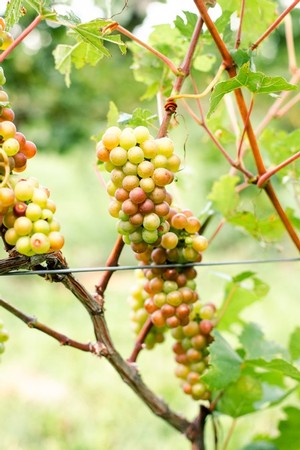Exploring the Significance of Flavor and Structure of Acidity in Wine
Exploring the Significance of Flavor and Structure of Acidity in Wine
 Often, acidity is center stage as one of the most critical components shaping a wine’s character and quality. From crisp whites to bold reds, acidity serves as the backbone, lending brightness, balance, and complexity to every sip.
Often, acidity is center stage as one of the most critical components shaping a wine’s character and quality. From crisp whites to bold reds, acidity serves as the backbone, lending brightness, balance, and complexity to every sip.
But what exactly is acidity? Acidity is a wine’s “pucker” or tartness. One example experts give when thinking about acidity is drinking a glass of lemonade. The pucker you get when you drink lemonade and the refreshment it gives you is the acidity. Just like with lemonade, it is acidity that makes wine great to drink on its own and pair with food.
While wine contains many acids, two main types are found naturally in grapes - tartaric and malic acids. When referring to acidity, experts are referring to total acidity or titratable acidity, which measures the amount of acid. For example, if your mouth is producing more saliva when you are drinking, the more sour it will taste.
Titratable acidity is also related to pH. While titratable acidity measures the amount of acid, pH measures the strength of that acid. If there is a high acid level, there will be a low pH level in the wine. How do these affect your wine?
Red wines that have a high acidity level will most likely be a bright ruby color while red wines with a lower acidity level can have more of a blue or purple hue. But, if the wine has lower acidity levels, it can take on a brown color because it is more prone to oxidation. This may not be as noticeable in red wines as in young white wines.
It is a common misconception that not all wines have acidity, but in fact, all wines have a little bit of acidity. Generally speaking, white wines tend to be more acidic than red wines. Experts add that sweet white wines are the most acidic. If the wine you are drinking tastes crisper and a little more tart on the palate, chances are it has high acid. Low-acid wines feel smoother and rounder on the palate.
Aging and Acidity
The level of acidity in a wine provides some of the backbone needed for long-term aging. Acid acts as a preservative that safeguards the liquid from deterioration over time. If the wine has a higher acidity level, it will generally have a greater capacity for aging and the complexity of the flavors and aromatics will deepen over time. However, the evolution of the acidity can transform a wine during this process. You may be able to notice new dimensions and nuances in the wine the longer it ages that you wouldn’t have experienced by opening the bottle right away.
 Where Does the Acidity Originate?
Where Does the Acidity Originate?
It all begins in the vineyard! Acidity is first present in wine grapes and is at its highest when they go through veraison. Veraison is when the grapes stop growing and start ripening and changing color. The longer the grapes are left on the vines, the further the acid level will fall. Wine-growing regions in cooler climates, like the Leelanau Peninsula, tend to produce wines with higher acidity due to cooler temperatures and a shorter growing season. If the grapes are grown in a warmer climate, the sugar levels will be higher which decreases the acidity level.
The significance of acid in wine can’t be overstated. It is the invisible thread that weaves through every bottle, adding vibrancy, balance, and depth to the tasting experience. From the crispness of a Sauvignon Blanc to the structure of a Cabernet Sauvignon, acidity plays a pivotal role in shaping the character and quality of each pour. As we raise a glass to toast the complexities of the vine, let us not overlook the humble yet indispensable acidity, which continues to captivate palates and inspire winemakers around the globe.
